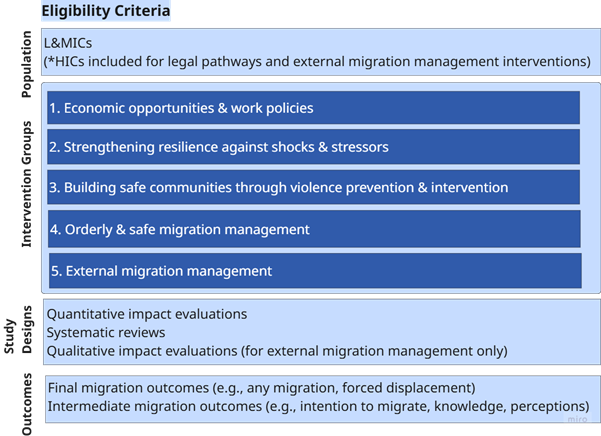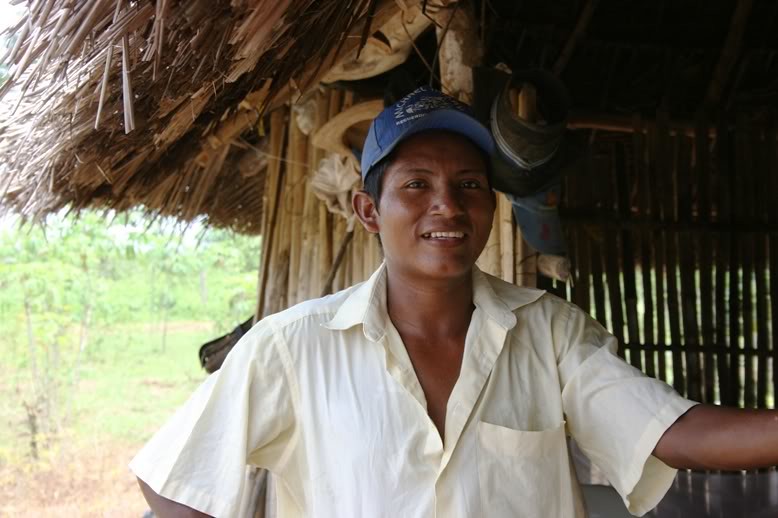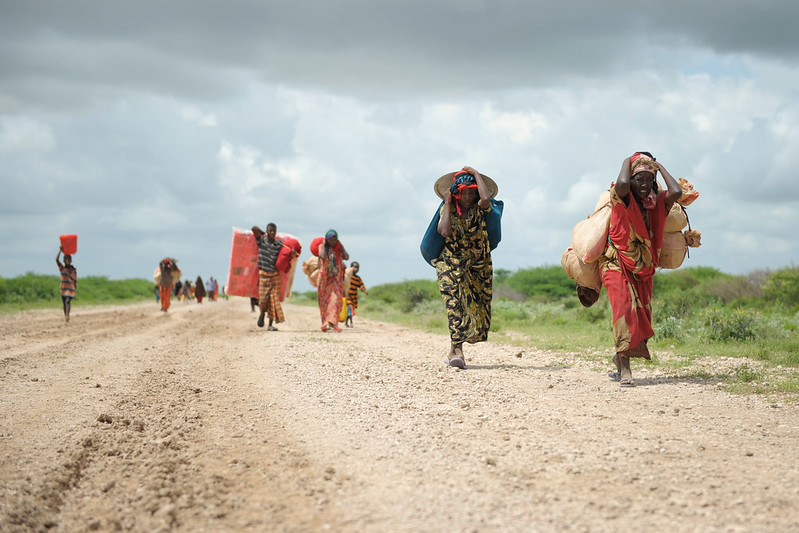We have just published our new inception report (protocol) for updating and expanding 3ie’s evidence gap map (EGM) on interventions addressing root causes and other drivers of irregular migration. Our new inception report sets out our approach—from defining the scope of interventions and outcomes to the systematic methods we will use—and how we will synthesize evidence. Please share any relevant studies with us (here) to help make our updated evidence gap map as comprehensive as possible.
Irregular migration is shaped by many interconnected factors, including economic opportunities, environmental shocks and stressors, conflict and insecurity, the availability of legal pathways, and external migration management. Migration is a constant feature of our world and the freedom to leave any country and to return to one’s own is a recognized human right under the Universal Declaration of Human Rights (UN 1948). The challenge is to make sure this can happen in ways that reduce risks to safety and well-being. Over the years, a variety of policies, programs and projects have sought to address these drivers, though some remain contested in terms of their objectives and impact. The big questions remain: Where are the evidence clusters and gaps? What do we know about the effectiveness of these interventions?
In 2023, 3ie started to address this by publishing its first evidence gap map (EGM) on interventions addressing the root causes and drivers of irregular migration. That map showed a steadily expanding body of research, and since then, the evidence base has likely grown even further, with more impact evaluations and systematic reviews emerging in the past two years. We are now launching a new project, supported by the Policy and Operations Evaluation Department (IOB) of the Ministry of Foreign Affairs of the Netherlands, to update and expand the map. Our map will bring together papers that meet the following eligibility criteria:

Note: For external migration management interventions, the L&MICs scope is limited to those in Sub-Saharan Africa and Middle East and North Africa, and Afghanistan, Pakistan, and Türkiye. More details are available in the protocol. Abbreviations: EGM = evidence gap map; HICs = high-income countries; L&MICs = low- and middle-income countries.
Beyond mapping, we will prepare concise evidence summaries of intervention categories with sufficient comparable evidence to address our questions on intervention effectiveness. These will provide useful implications to support the Dutch Ministry of Foreign Affairs’ ongoing evaluation of migration cooperation and partnerships, led by its independent evaluation unit (IOB).
And here’s where you come in: as part of this work, we are inviting contributions of any ongoing or completed studies that you think are relevant to our work. Sharing such studies will help ensure the updated EGM is as comprehensive and useful as possible. Click here to share studies with us by 31 October.
The interactive map and technical report will be made available in November 2025, followed by evidence summaries and the synthesis report in February–March 2026. All outputs will be freely available on 3ie’s website.
We’re excited to share this work as it develops, and look forward to engaging with colleagues across the migration and development community to ensure decisions and policies are guided by the best available evidence!







